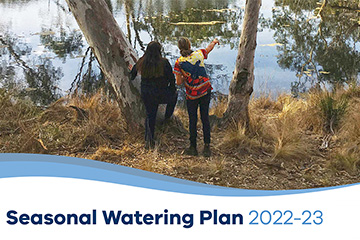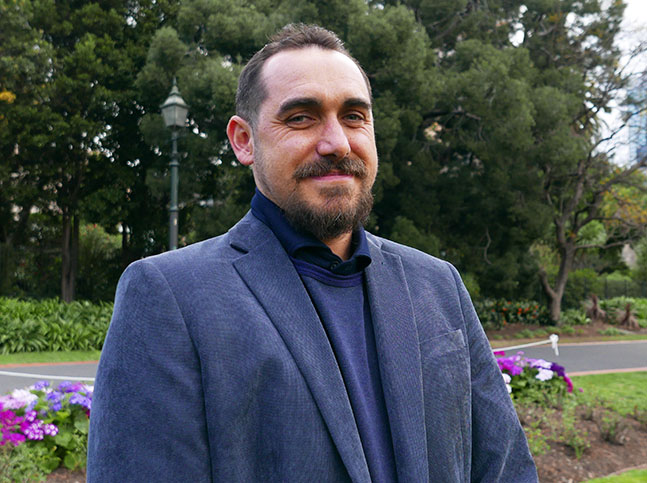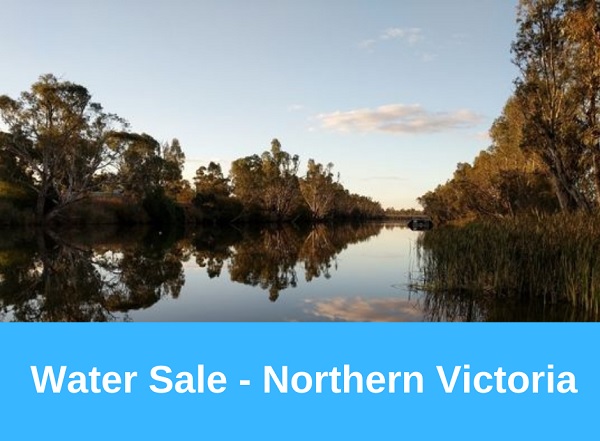Reflecting on 10 years of the Victorian Environmental Water Holder
11 February 2022
2021 marks the tenth birthday of the Victorian Environmental Water Holder (VEWH). As a significant milestone for the organisation, we have been reflecting on the past ten years – what has changed, and the progress made – and forecasting what the next ten years might bring.
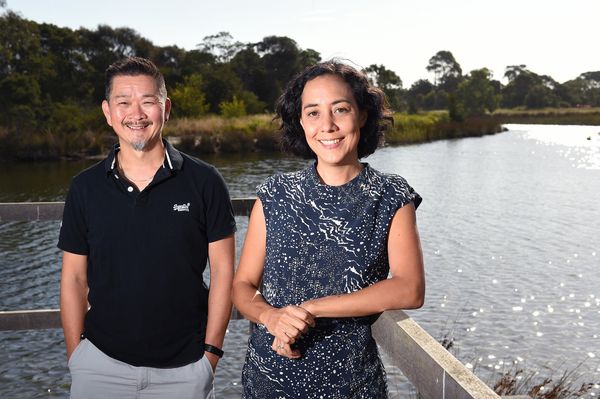
Co-CEOs of the VEWH, Paulo Lay (Left) and Dr Sarina Loo (Right)
By Dr Sarina Loo and Paulo Lay (Co-CEOs, Victorian Environmental Water Holder)
2021 marks the tenth birthday of the Victorian Environmental Water Holder (VEWH).
As a significant milestone for the organisation, we have been reflecting on the past ten years – what has changed, and the progress made – and forecasting what the next ten years might bring.
Our first reflection was that we feel privileged to be part of fantastic team of people across the Victorian environmental watering program. There are many different agencies and communities who work together to protect the unique and valuable plants and animals that live in our rivers and wetlands. Their passion, intelligence and commitment are essential to maintaining our collaborative partnerships which are the foundation of the program.
Our next reflection was that there have been three phases of development in the program: Establishment, Extension and Evolution, each with their own challenges and successes which have shaped how we now all work together to manage water for the environment.
Phase 1: Establishment
The VEWH was given a big job, and we took it seriously.
We came into existence off the back of the worst drought on record. It had been many tough years for communities, and we were on the brink of environmental disaster. The cumulative impact of many decades of major river modification for water supply, severe drought, followed by major flooding in many regions, meant that most systems needed critical life support.
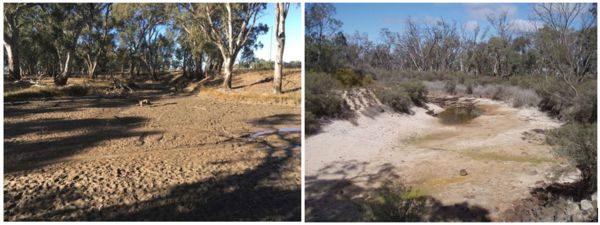
Lower Broken Creek 2019 (left), by Goulburn Broken CMA and Wimmera River at Lochiel 2010 (right), by Wimmera CMA
Water was a hot issue and huge reform was being introduced through the Murray-Darling Basin Plan (the Basin Plan). While Victoria had been managing environmental water since the 1990s, the volumes of water to be delivered under Basin Plan were a whole new ball game.
Establishing an agency like the VEWH was to ensure a strong and independent decision-maker for environmental water at a state-wide level and provide a high level of transparency about planning for and using such a valuable resource.
Our first mission
We were tasked with supporting coordination with Commonwealth agencies in implementing watering under the Basin Plan, whilst still respecting local evidence used to inform decisions. Now it was time for the fledgling organisation to build the foundations of a new planning, use and reporting framework.
Managing water for the environment was an emerging discipline and some early decisions were needed that had never been made before with such broad implications for Victorian waterways, such as:
- What would a seasonal watering proposal or plan look like to inform decisions around how, when and why we use environmental water?
- How might we make decisions transparently, boldly and robustly whilst gaining support from our critical partners and their communities?
- How do we manage the risks of environmental watering, such as the unintentional inundation of private property, as we seek to deliver key environmental objectives?
- What monitoring programs need to be established to demonstrate the outcomes from environmental watering?
Our approach
A key reform from the Millennium Drought was emphasis on providing water users (e.g. irrigators, water corporations) with the tools to manage their own risk in a way that suited their business needs. This was also applied to the VEWH. Carryover and water trade were some of the levers VEWH had available to it to achieve environmental outcomes – we needed to refine how/when/why we would pull them.
As with any ship venturing into new waters, you need experienced navigators. The VEWH has consistently drawn on the deep experience and skills of our Commissioners . An early driver of the VEWH and its approach was its inaugural, long-term Chair Denis Flett.
Denis and the other Commissioners encouraged the VEWH to be bold and adopt an exploratory, continuous improvement, learn-by-doing approach to developing the program each year.
Collaborative partnerships are our foundation
Waterway Managers (Victorian Catchment Management Authorities and Melbourne Water) were and continue to be essential partners in the development of the program.
The VEWH recognised at the outset: we can’t achieve anything without our partners’ critical contribution and collaboration.
"Collaborative partnerships are the foundation of the environmental watering program. Not a single drop of water could be delivered without our regional partners."
Dr Sarina Loo, Co-CEO, the VEWH
There was, and continues to be, a strong emphasis on regional/local input and community engagement. We were building on the good work already being done by waterway managers since the 1990s. Collaboration was a core value from the outset.
We recognised that the job of planning for and delivering the water must be managed locally and collaboratively, or it won’t work. CMAs and Melbourne Water have the critical on-ground roles – the ability to adaptively manage, operate in-region to conditions as they are occurring, work with landholders/communities, integrate the program, coordinate investment from governments to achieve integrated outcomes and so on. Easy to say, challenging to do.
Water storage managers and river operators were also critical partners. They have an important function to deliver water for all needs. Historically they have managed for water supply, but now they were working with us to adapt the use of infrastructure to help provide benefit to the environment.
After over 100 years of delivering water for irrigators using infrastructure, rules and procedures designed for irrigators, there was now a new water “customer” – water for the environment.
We would need to develop a relationship with river operators and work together to learn how the systems could be operated to provide environmental benefits, mitigate risks and continue to provide for other water users.
Coordination across the Basin
The VEWH was not the only environmental water holder on the scene, with the states and federal governments already implementing the Living Murray (TLM) program (administered by the Murray-Darling Basin Authority (MDBA)) and the Commonwealth Environmental Water Holder already established.
There was an early commitment from the VEWH Commission to take a collaborative, partnership approach to its interjurisdictional responsibilities. This meant respecting individual accountabilities but building strong partnerships for collective outcomes. The collaborative effort now takes the form of the Southern Connected Basins Environmental Water Committee which coordinates flows in the southern Murray-Darling Basin. Where we can, the water portfolio across the environmental water holders is used as “one bucket” to maximise outcomes.
Phase 2: Extension
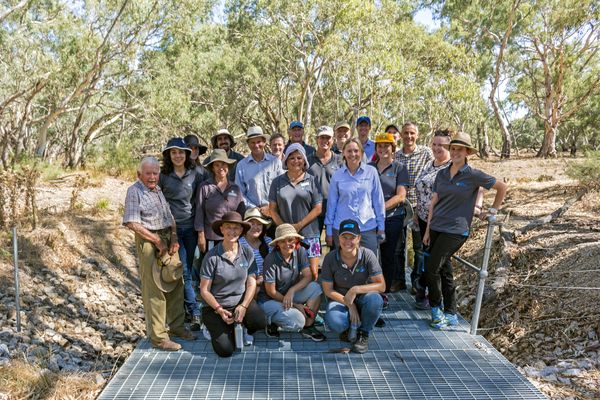
VEWH staff visiting the Loddon River in 2018, by North Central CMA
After finding our feet, we entered a phase of consolidating those foundations and starting to see the outcomes of our efforts as well as identify the opportunities for improvement.
The program was growing – more water, more sites, more risks, more players – and the complexity and requirements were increasing – but so were the opportunities.
We had gone from overseeing delivery of 544 GL to 45 river reaches and wetlands in the VEWH’s first year, to delivering 655 GL to 171 river reaches and wetlands in 2020/21.
Increasing the voice of Traditional Owners
One of the most important changes that needed to be made during this time was an increase the participation and influence of Traditional Owners in the environmental watering program. There is a meaningful intersection between the aims of the program – healthy waterways, healthy communities – and the deep and enduring connections and obligations Traditional Owners have to Country and community. Unfortunately, while there were some existing initiatives such as TLM Indigenous Partnership Program in place, Aboriginal voices were not frequently enough being heard in the program.
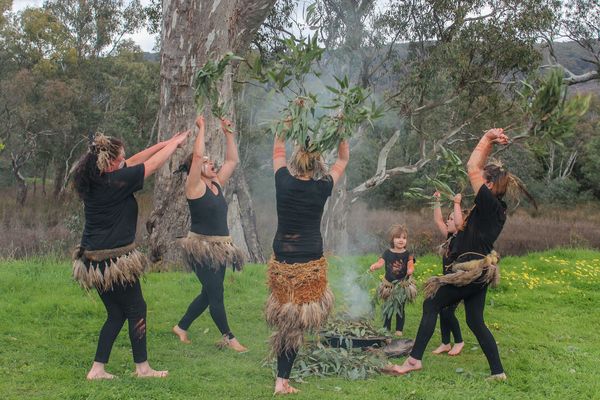
Taungurung women dance at Horseshoe Lagoon, by VEWH
A key initiative of the Victorian Government’s Water for Victoria (2016) policy was the creation of a fourth VEWH Commissioner role specifically for an Aboriginal Victorian. Rueben Berg (a Gunditjmara man) was appointed to the VEWH Commission in 2017 as its first Aboriginal Commissioner. Rueben brings a unique wealth of ideas and perspectives to the VEWH that has enriched our thinking and helped to drive improvements across the program, including how we consider Aboriginal values and perspectives in all aspects of the environmental watering program.
It has been a learning journey and while we have made some mistakes along the way, we own them and improve what we do each year. We are still a long way from meeting self-determination aspirations of Traditional Owners, and there's a lot of opportunity and commitment to keep strengthening partnerships over time.
Water for the environment is working
Research and monitoring programs show that water for the environment is working. For example, over ten years of ecological monitoring has been undertaken at six priority sites, as part of The Living Murray initiative.
The monitoring provides a strong evidence base that, where water for the environment has been delivered, the health of the rivers, wetlands and floodplains are improving.
The use of water for the environment is building on the benefits of natural flooding, supporting resilience in dry times and achieving environmental outcomes.
We are seeing fish populations recovering, discovery of species not seen in waterways for many decades, successful bird breeding events and both in-stream and streamside vegetation establishment. For example, monitoring in the Campaspe River has shown increases in native fish numbers since 2012, including boosts in golden and silver perch, Murray cod, Murray-Darling rainbow fish. In some cases, that fact that waterway health hasn't got worse is an achievement in itself. Holding the line is progress, particularly in urban areas.
Environmental recovery, with assistance from water for the environment, takes commitment – it's a long game. We expect more improvement in time. At this stage, after only 10 years, we can be encouraged to see our collaborative efforts moving the environment in the right direction.

Murray cod release, by Arthur Rylah Institute
Increasing sophistication in the use of water management tools and investment options
The VEWH’s teams are always learning to be more efficient and effective in our use of environmental water using a range of tools, such as carryover, trade, reuse of return flows (using the same water multiple times as it travels down a river system) and ‘piggybacking’ on consumptive water as it is being delivered to other water users. Additionally, using environmental works (such as pumps and regulators) has delivered water for the environment to achieve outcomes with much less water.
Over the years we have refined our water trading approach and become more sophisticated in investment into complementary integrated catchment management activities. For example, the proceeds from the sale of water allocation were used to fund the design and construction of a fishway at the Koondrook Weir in Northern Victoria (pictured below) to enable thousands of native fish to reconnect with the Murray River and better feed and breed in the rich habitat of Gunbower Creek.
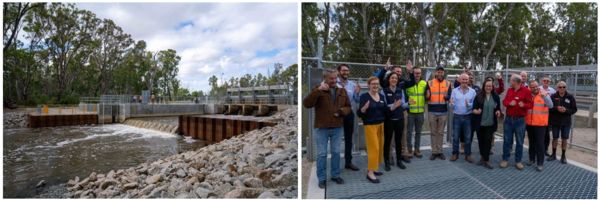
The Koondrook Fishway (left), the result of work by Goulburn-Murray Water and S&R Engineering and Construction, was launched on 9 December 2021, by the Parliamentary Secretary for Water, Ms Harriet Shing. The fishway is part of the North Central CMA’s Native Fish Recovery Plan, which aims to create a world-class native fishery in the region.
Environmental water benefits everyone
The recognition that a healthy environment provides not just environmental benefits, but also social, well-being, cultural and economic benefits has grown over the past decade.
In some cases, the timing of environmental flows has been adapted to coincide with recreational events such as kayaking or fishing events.
New sites have been added to the program where broad benefits can be delivered, particularly for Traditional Owner cultural benefits and recreational benefits.
Maximising the benefits from healthy waterways for communities is an inherent part of the job, but we can’t always meet all expectations and in a water scarce future we need to look at optimising benefits at a landscape scale.
Partnership with community groups have been formed throughout the past decade. Notably through the VEWH’s biennial Environmental Water Matters Forum, community membership on CMAs’ Environmental Water Advisory Groups, the Victorian Fish Habitat and Flows Angler Roundtable, and regular meetings with Traditional Owner groups/corporations and irrigator groups.
The input of many diverse voices has made a stronger and more sophisticated program that delivers more integrated outcomes.
Phase 3: Evolution
The Victorian environmental water program has been built on solid foundations.
The policy framework is sound and during the 10 years of VEWH’s operation, we've had severe droughts and floods, and have been able to make effective decisions during those periods to manage the water holdings to the best effect we can with the information we have available.
Reflecting on progress
"It is fantastic to see the outcomes of water for the environment benefiting not just the plants and animals that rely on the water, but also local communities through improved natural amenity, recreational opportunities and the preservation of cultural values."
Paulo Lay, Co-CEO, the VEWH
When we look back now at those big challenges that we have worked through in our partnerships, it’s important to realise what we were achieving together in Victoria and through the Murray-Darling Basin Plan was ground-breaking. Few other countries have a water management framework that has water legally set aside for the environment.
With the perspective of 10 years of progress, we can be very proud that the environmental watering program is providing efficient and effective use of the environmental water reserve and is considered world leading in international forums. The level of collaboration, which engages communities to inform decisions on how water for the environment will best deliver broad benefits for the local region, is admired by many countries.
Looking to the future
Looking forward there’s always room for improvement. With population change, climate change and shifting community expectations, the program will need to evolve and be adaptive.
Over the next ten years we aspire to progress in a number of strategic ways:
- We will better consider how we can deliver benefits from environmental water at a landscape scale.
- We aim to be more sophisticated with how we trade water and invest the revenue raised from the sale of water into strategic priorities and essential complementary works and measures.
- Strengthening alignment to other land and water management projects will be critical to recognise environmental, social and cultural connectivity.
- We will work with our partners to address water delivery issues and constraints, particularly through the Sustainable Delivery Limit Adjustment Mechanism projects, under the Murray-Darling Basin Plan.
There are also a number of opportunities on which we can build:
- Once the Victorian Murray Restoration Floodplain Project is completed in 2024, we will have an additional 14,000 hectares across nine high-value floodplain sites that we can water and protect into the future.
- With a new Victorian Waterway Management Strategy, and associated Regional Waterway Strategies, to be developed in the next two years, progress in evolving the environmental watering program is not far off.
- Additionally, the completion of the Central and Gippsland Region Sustainable Water Strategy (SWS) and progressive renewal of other regional SWS, may result in further recovery of water for the environment. As many rivers and wetlands continue to have less water than is needed to keep them healthy, the additional water will help to protect the plants and animals that live in them.
- The delivery of a Roadmap to Aboriginal Water Access and a process around negotiating Treaty/ies with the State of Victoria may offer further opportunities to support Traditional Owners on the path to accessing water and managing water on Country on their own terms. This is an exciting area of future focus for the VEWH, which will work within its power to support progress towards self-determination within the environmental watering program.
Ultimately, healing and caring for our precious rivers and wetlands is a long game.
With the passion and dedication of all those involved in the environmental watering program and with the support of community members, we can maintain the benefits healthy rivers and wetlands provide for everyone to enjoy.
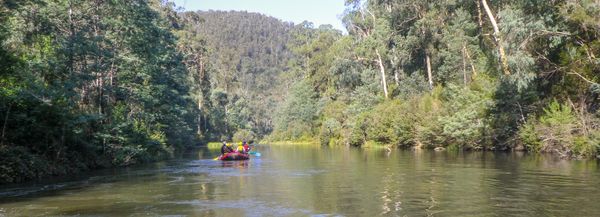
Paddling on the Thomson River, by West Gippsland CMA
Further Information
For further information please call
03 9637 8951 or email
general.enquiries@vewh.vic.gov.au.
